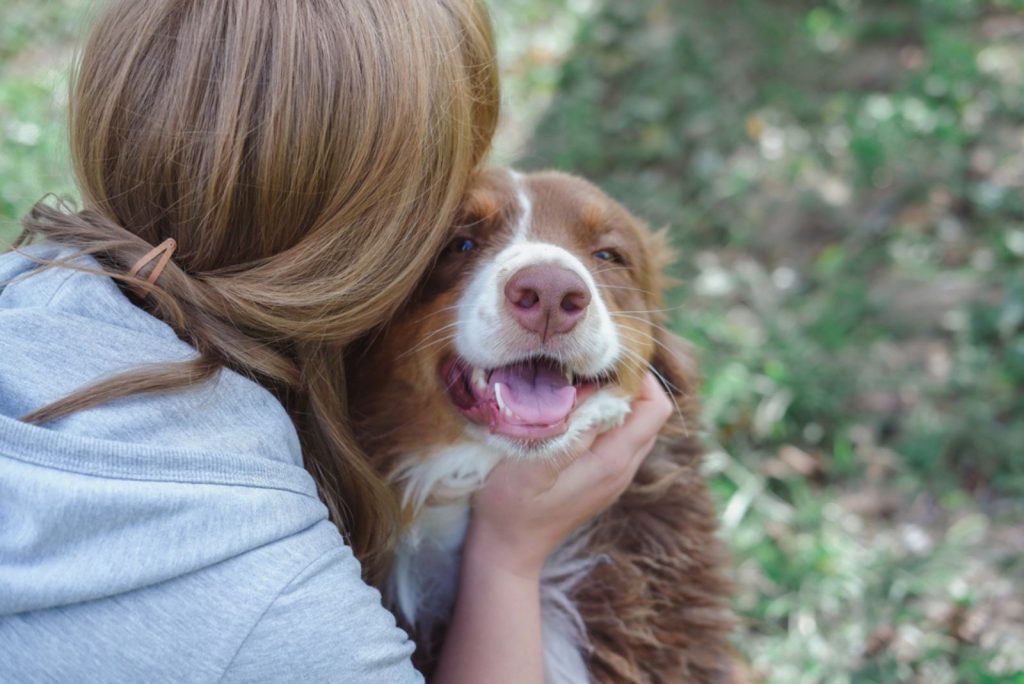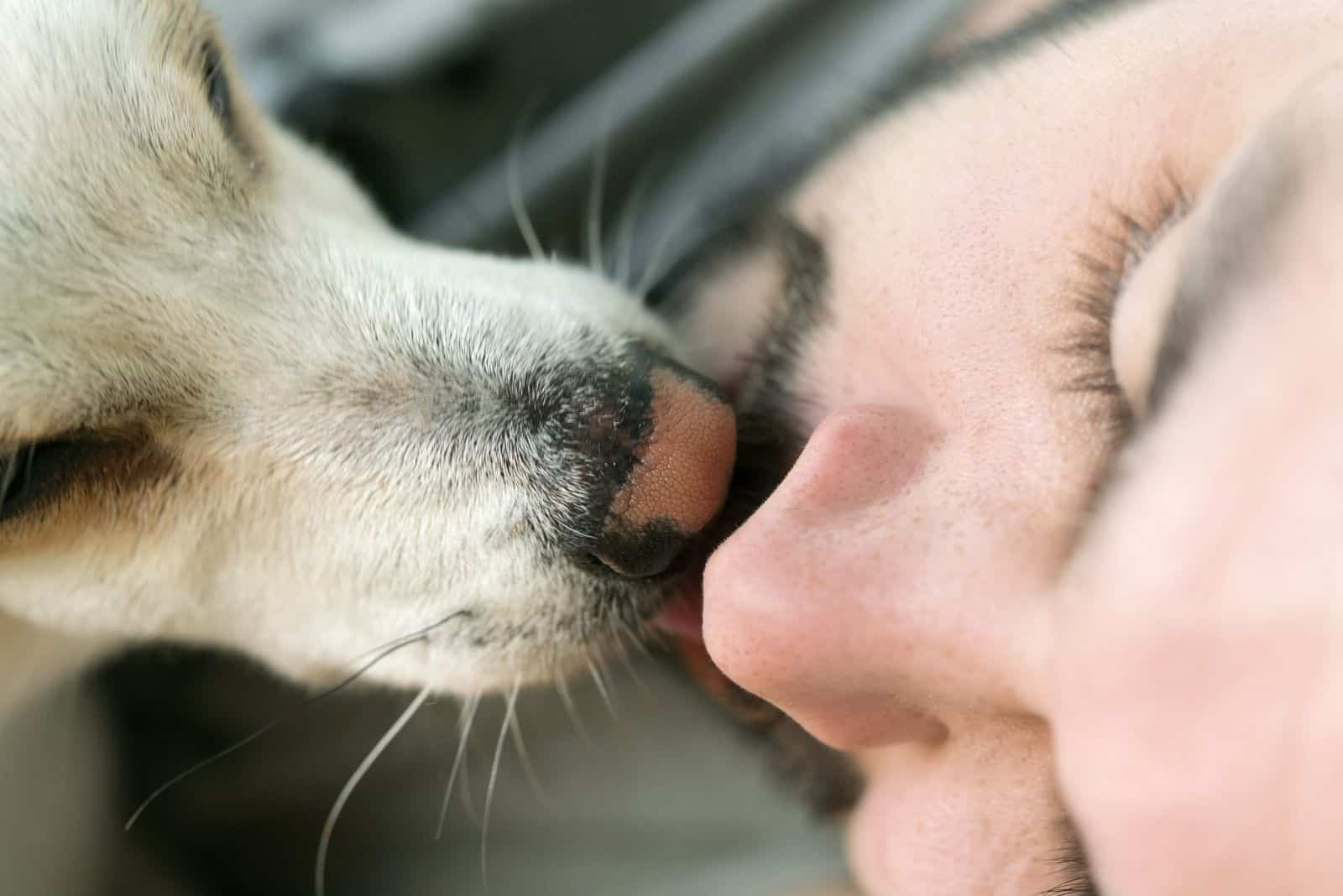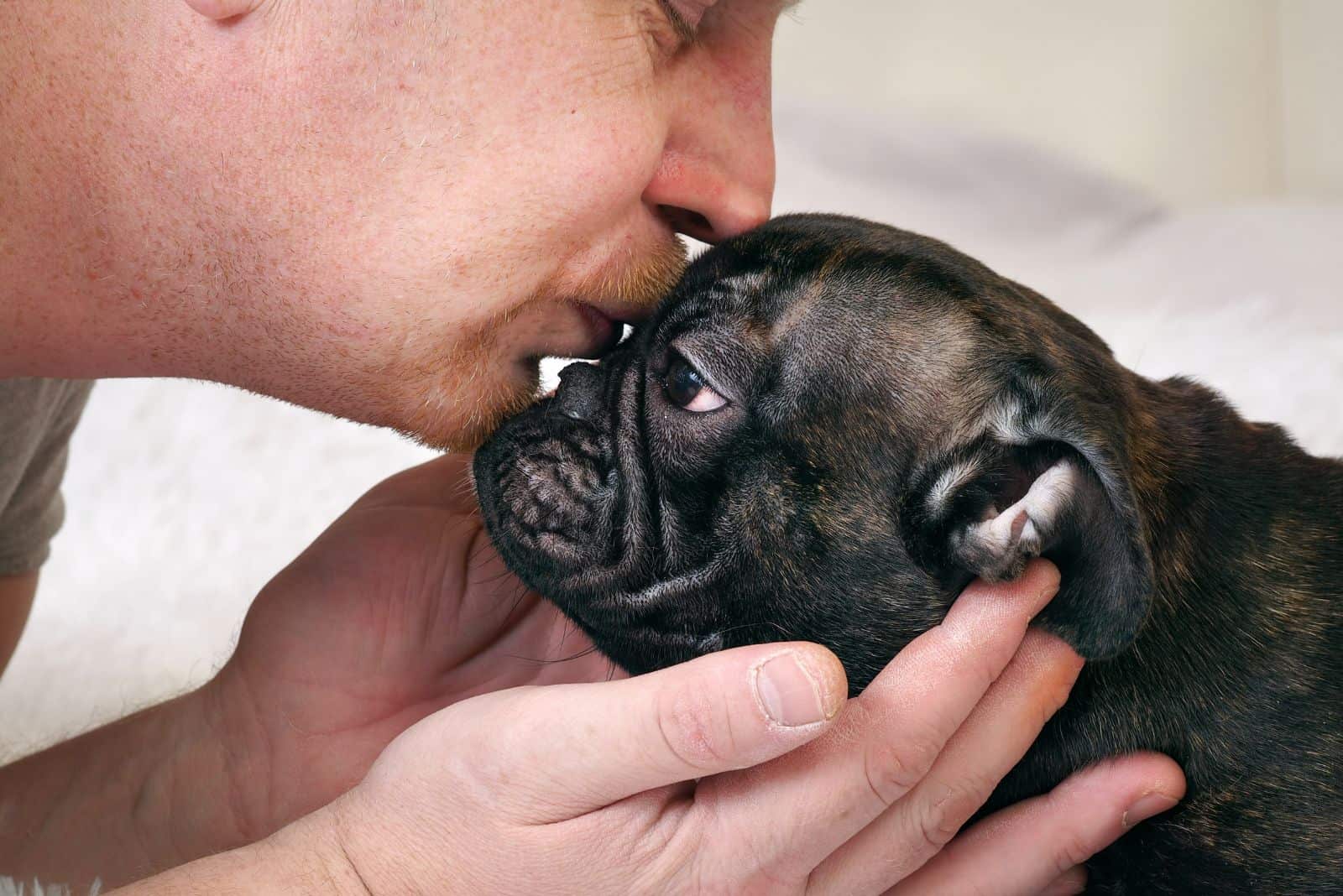From an owner’s point of view, kissing a dog is very fulfilling and says that you love your dog. If you are wondering how this gesture affects the dog and what their read of the situation is, you will find an answer here.
Their understanding of a kiss can depend on a few things, including the dog breed, relationship with the owner, and socialization skills. So, how should you look on dog kisses, and are they adequate for your dog?
A Dog’s Understanding Of Kisses

I talked about which emotions dogs are capable of feeling and how to understand them in another article, but what do they make of kissing?
Well, for starters, the kiss alone as a physical expression of affection means little to them. You have to put them into context. Canines interpret human behavior through general body language, which means they need more clues for the smooch to have a clear meaning [1].
That meaning is defined by what state of mind the owner is. If you are hectic affectionate, a kiss might make them unsettled or anxious. Any calm physical contact will usually produce an equally calm reaction from the dog.
Basically, how you feel helps the dog understand the meaning behind the kiss. I doubt many owners kiss their dogs with bad intentions, so your dog is aware you mean well.
Another thing that helps dogs understand human kisses is the pitch of your voice, choice of words, and body language. If all of those contribute to a positive experience, the kisses will be well received as well.
This Is How Your Dog Will Tell You What It Thinks Of The Kiss
While some dogs might be clear about how they feel when you kiss them, others might confuse you with their reaction. By far the most frequent are grouped into two categories, and it explains why they happen, too.
The reasons behind them can be purely instinctive (physical), or psychological. While it’s not hard to distinguish between them, to the untrained eye they might appear very similar.
Yawning
In this scenario, your dog might be simply tired. If you kissed it after a long playtime session, it can be a sign of relaxing due to the affection. Dr. Tynes explained for Readers’ Digest that a yawn might simply come when a dog is tired or sleepy.
If it’s the middle of the day and your dog wasn’t exhausted, then the yawn is more in line with discomfort and anxiety. Whenever my Belgian Malinois doesn’t understand what I am asking of it, a yawn tells me that I should be more clear.
Similarly, close physical contact can be a strange occurrence for your dog. If you don’t do it often, a dog might be confused about what to do after it happens. More often than not, yawning is a signal that kisses are an invasion of privacy in these circumstances.
Certain dog breeds that are bred or raised to do their job without much contact or direction from humans will react this way from the beginning [2]. Take the cue and find another way to show affection.
Sneezing
Sneezing is typically connected with a physical response to some external factor. Your perfume, shampoo, body wash, makeup, or laundry detergent might trigger an allergic reaction in your dog.
Canines have a sense of smell more than a hundred times stronger than human, according to Science.org. If you are certain that none of the chemicals found in your hygiene products, then the sneeze is probably a way to show playfulness, says Dr. Tynes.
Rest assured that sneezes are more often than not going to be a sign of approving kisses, or disapproving your choice of perfume or shampoo.
Got Kissed Back? Here Is What It Can Mean

One of the most basic roles of dog “kisses” (they’re actually licks) is to keep good relations with their owner(s). Stanley Coren explains for Psychology Today that the majority of times, your dog licking you on the face is a “white flag” or peacemaking move.
In the same article, he says that the social function of licking in the dog world is crucial in conveying the right intention. So, our kissing them has something to do with them licking us back.
From a purely physical aspect, licking your face is possibly their way of letting you know that they want food. This instinctual behavior in puppies, according to PetMD, is used to help the mother regurgitate food so that they can feed on it.
When your dog is licking your arms or feet, it’s probably because they are infused with tastes that appeal to their “palate”. Sweaty arms or legs can get pretty salty, so your limbs may become lollipops.
All of these meanings behind “kisses” are a part of regular communication between dogs. Dogs can slightly change the way they lick us to be more similar to how we kiss them. Still, owners should know how to properly read the situation if their kisses appear to be unappreciated.
The Risks Involved In Kissing Your Dog
This shouldn’t come as a surprise to any owner. No matter how immaculately clean your home is, dogs have bacteria in their mouth that can cause health problems for humans.
The American Council on Science and Health, ACSH, says that the pathogens found in dog saliva are usually not a common reason for people getting sick. They concluded that the bigger concern should be whatever your dog last licked.
If you’ve been out and about with your dog, it is probably best to avoid kissing it or letting it kiss you. Social bonds and affection are great, but health should be the primary concern for both owner and dog.
Dog owners who like this way of expressing affection with their dog should realize that not every individual dog or breed is the same. Some might enjoy it, others might despise you getting in their face.
Most importantly, stay in tune with what your dog is telling you by its body language. Consult our tail and ear position charts to get a better grip on communication with your canine companion, and stay safe.
References:
[1] Sussex Publishers. (n.d.). Dogs read your emotions and attach them to what you look at. Psychology Today. Retrieved April 5, 2023, from https://www.psychologytoday.com/intl/blog/canine-corner/201311/dogs-read-your-emotions-and-attach-them-what-you-look
[2] Morrill, K., Hekman, J., Li, X., McClure, J., Logan, B., Goodman, L., Gao, M., Dong, Y., Alonso, M., Carmichael, E., Snyder-Mackler, N., Alonso, J., Noh, H. J., Johnson, J., Koltookian, M., Lieu, C., Megquier, K., Swofford, R., Turner-Maier, J., … Karlsson, E. K. (2022). Ancestry-inclusive dog genomics challenges popular breed stereotypes. Science, 376(6592). https://doi.org/10.1126/science.abk0639
